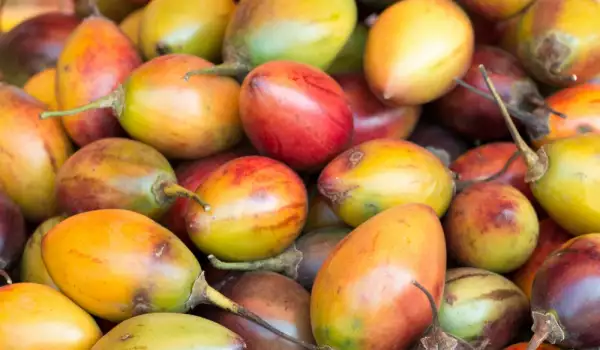The urge to try new and bizarre things leads us to ever farther parts of the world. Undoubtedly, tamarillo is among the most exotic and uncommon fruits.
Tamarillo, also known as the tree tomato, which can be grown as a pot or garden plant, grows exceptionally fast. Tamarillo belongs to the nightshade family and is native to the northern regions of South America.
The exact place of origin has not been fully determined but according to numerous experts the birthplace of the tree tomato could have been Bolivia, Ecuador, Chile or the Andes in Peru. It's widely grown in Brazil, Colombia and Argentina.
Growing Tamarillo
Tamarillo is easy to plant using cuttings, while it's not that complicated to care for, making it suitable for growing even by beginner gardeners.
The tree can be left to grow in a field or in a large pot but it cannot survive extremely low temperatures. Tamarillo grows up to 13 ft (4 m) high but if growing it at home, you can prune it to 6.5 ft (2 m).
It's not picky toward fertilizers and soils but does require a well draining area because excessive moisture can kill it within several hours.

Tamarillo is propagated using cuttings and seeds, while grafting is excellent. To speed up seed germination, they can be washed and dried, then placed in a freezer for 1 day. Next comes planting in pots with soil and sprouting after 5-6 days.
The tamarillo tree absolutely loves sunny and light-filled areas, so it needs to be placed in such. For fertilization you can use special fertilizer but even tomato fertilizer will get the job done.
Tamarillo grows exceptionally quickly - in just 1 year it can grow to over 3 ft (1 m). It begins to give fruit between 1.5 to 2 years after its planting and can continue to do so for at least 5-6 years. If cared for properly it may yield fruits for up to 11-12 years.
Culinary Use of Tamarillo
Even if tamarillo is not common everywhere it has been gradually winning over the hearts of chefs. The well ripened fruit has an edible soft inside, atypical taste and red color. Despite it being called a tree tomato and the apparent close similarity between it and the tomato, they have nothing in common.
There is one key peculiarity regarding the consumption of tamarillo - you'll notice an unpleasant aroma if you were to smell the tree because the entire tree is toxic. However, the fruits are perfectly good for consumption but only if they're perfectly ripe - when they turn completely red.
The seeds of a not well ripened tamarillo are bitter and can cause stomach problems. While still green, the fruits can act as a weak poison, which is why only the red ones find use in cooking.
Tamarillo does not possess the characteristic fruit taste - it may be sweet and juicy but you'll also notice slight smokey-salted nuances, which don't always match everyone's taste.
Quite often, tamarillo is used in recipes for salads, appetizers and main courses and can even be considered a worthy avocado substitute. Tamarillo is not as fatty as an avocado but its inside is much more watery. When you cut the fruit you'll see small black seeds - these are edible and don't need to be removed.
Tamarillo can be eaten fresh or heat treated, can be added to sweet recipes as well as salted. If you would like to eat tamarillo directly, simply cut it in 2 and scoop out the core using a small spoon.

It can be flavored with sugar or with salt. You can drink tamarillo in juice form - a traditional beverage for the mountain nations of South America.
Tamarillo can be roasted without a problem, just like vegetables. An oven or pan baked (without any oil) tamarillo is an easy-to-make and wonderful garnish to a main course.
Experienced chefs usually include it as a garnish to fish, while the boldest among them use it as a stuffing for various cakes. Don't risk frying tamarillo because of the very real danger of having your entire kitchen end up a mess. The best and at the same time healthiest method remains baking.
Benefits of Tamarillo
Tamarillo is an incredibly healthy fruit because it provides the body large amounts of phosphorous, calcium and vitamin C. The fruit is rich in magnesium, potassium, group B vitamins and antioxidants.
Consumption of tamarillo helps strengthen the skeletal and immune system, cleanses accumulated toxins from the body, improves joint flexibility. But still, as with all other healthy fruits, it shouldn't be overconsumed. It is believed that the daily serving shouldn't exceed 5.5 oz (150 g).
3.5 oz (100 g) of tamarillo contain just 40 calories, little fat and fruit sugars, making it a prime food of choice for people on a diet.







